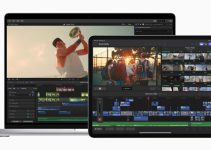Shooting at 24 frames per second has become the gold standard for film almost since the advent of medium format as we know it. You’ve probably heard how capturing footage at that frame rate is part of what gives any video a more cinematic look, since it’s a practice that trails back to the early days of cinema.
While shooting at 24 frames per second all the time may seem like a good idea, in reality, that’s not always the case. There are a few occasions in which recording at this frame rate isn’t the best option, as explained in the informative video created by camera acclaimed filmmaking accessory manufacturer Aputure below.
The first instance of shooting at 24 frames per second you would want to avoid is when you’re trying to achieve a very vintage aesthetic in your video that of which reflects the style of movies shot at the silent film era. In this case, you’d want to shoot at 16 frames per second, which used to be the standard of the old days.
Or, if you’re looking into making a video in the style of classic animations (i.e., Snow White period and a bit earlier/later), you’ll want to go for 12 frames per second. This approach was chosen by the animators at the time since they had to draw all their animations by hand.
For those looking into shooting action scenes, try filming at 21/22 frames per second. While even Hollywood films are commonly shooting at 24 frames per second for action scenes, recording at a slightly lower frame rate gives off a snappier, less smooth motion to your shot making punches and movement seem more sudden.
If you want to shoot something that mimics a home movie, sitcom, or early 2000 shows, consider filming at the classic 30 (29,976fps) frames per second (regarding NTSC standard). This specification used to be the frame rate limit of television but has since then been exponentially replaced with 60 frames per second. Due to the fact that 30 frames per second standard has been around for such a long period of time, many shows still shoot at this particular frame rate.
When you watch a commercial on television these days, there is also a good chance that it was shot at 60 frames per second, which is another television standard frame rate adopted by more and more broadcasters around the globe. Meanwhile, if you’re planning to film some slow-motion shots for let’s say a drifting car or epic football kick, obviously, you’ll need to shoot at either 120 or 240 frames per second.
Peter Jackson shook the film industry when he decided to shoot The Hobbit at an obscure 48 frames per second a few years ago. Some other directors and creative professionals have also joined the party and started to follow suit when shooting very high-resolution films since the frame rate gives off a more real-to-life, almost video feel. Hence why 48 frames per second may be another option to consider.
We’ve all seen those cool shots of a basketball player making a slam dunk in slow motion. How do they do it? Well, they simply shoot at a whopping 300 frames per second, the current standard frame rate for slow motion when filming sporting events.
If you think sporting events have a high frame rate, wait until you see those cameras used by scientists. During research, they more often than not have to use cameras that go way beyond 300 frames per second. The higher the frame rate, the more thoroughly a scientist can study their subject.
In fact, NASA has developed a camera that shoots at 1/1,000,000,000,000 of a second. With file sizes that big and speeds that slow, however, don’t expect to see the footage screened at your local movie theater anytime soon.
[source: Aputure]
Disclaimer: As an Amazon Associate partner and participant in B&H and Adorama Affiliate programmes, we earn a small comission from each purchase made through the affiliate links listed above at no additional cost to you.



Of course people confuse classic 30 (29,976fps) frames per second (regarding NTSC standard). with 30 P but classic NTSC is actually interlace 59.94 fields/sec with exactly the same temporal motion as 60P the camera is “taking” 59.94 images per second just like 60P but they are only fields ( half vertical resolution ) not full frames. Unfortunate that the timecode is the same as 30P . This coinciding with the sync pulse for interlace every two fields which is why for similar motion now one should shoot 60P not 30P.